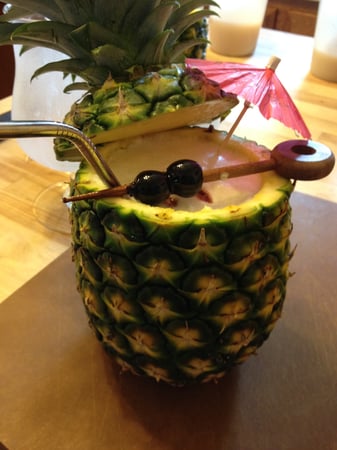This past Independence Day weekend was finally a taste of summer weather – sunny days and cool nights. What better way to take advantage of time off and great weather than a cocktail party on the patio? What is the spirit of choice you may ask for a warm day in the sun you may ask? Why rum, of course! Spirit of the Caribbean and precursor to bad choices… well sometimes.

After the great response to my last blog about rye whiskey, I thought it was only appropriate to follow up with more booze induced posts. I think rum tends to get a bad rep from many years of low quality spirits being drowned in cola. There is so much more to good rum than that.
So, what makes a good quality rum?
The first distillation of rum took place on the sugarcane plantations of the Caribbean in the 17th century. It was discovered that molasses, a byproduct of the sugar refining process, could be fermented into alcohol. Later, distillation of these alcoholic byproducts concentrated the alcohol and removed impurities, producing the first true rums. Tradition suggests rum first originated on the island of Barbados. As with many other spirits, there are several different types of rums, and since most of them are produced outside the U.S., the controls and definitions are not as strict as spirits like whiskey.
Light Rum - Also referred to as "silver" or "white" rums, generally have very little flavor aside from a general sweetness. They are aged, but not for a specific amount of time, and sometimes they are filtered after aging to remove any color. The majority of light rums come from Puerto Rico.
Gold Rum - Typically called "amber" rums, they are medium-bodied rums that are usually aged in the charred, oak barrels that are the byproduct of making Bourbon whiskey. (Now it all comes full circle from last month). They have more flavor and are stronger-tasting than light rum, and can be considered midway between light rum and the darker varieties
Dark Rum – These rums are usually made from caramelized sugar or molasses. They are generally aged longer, in heavily charred barrels, giving them much stronger flavors than either light or gold rums. Hints of spices can be present in some, along with a strong molasses or caramel overtone. They commonly provide substance in rum drinks, as well as color and are the type most commonly used in cooking. Most dark rums come from areas such as Jamaica, Haiti and Martinique.
Spiced Rum - Obtain flavors through the addition of spices. Most are darker in color, and based on gold rums. Some are significantly darker, while many cheaper brands are made from inexpensive white rums and darkened with caramel color. Among the spices added are, vanilla, cinnamon, allspice, clove, nutmeg, or even black pepper.
What rums did I enjoy over this tiki drink weekend? Here are the recipes.
The Scordato House Mai Tai
- 1 oz Amber rum. We like to use Tailwind’s Taildragger Amber Rum (It’s from Plainfield, IL… pretty cool and quite delicious.)
- 1 oz Light rum. (I love the new Cana Brava rum from 86 Co. that we have at The Chopping Block. It’s made in Panama and is aged similar to an amber but filtered so it has a beautiful clear color and great light flavor.)
- 1 oz fresh lime juice
- 1/2 oz Orgeat syrup. (Orgeat is a sweet almond syrup with a touch of orange and sometimes rose flower water)
- 1/2 oz of Combier (The original orange liqueur, you could use Cointreu.)
- Luxardo cherries
- Mint or lime (or both)
Place all ingredients in a shaker with ice and shake vigorously. Strain into a glass filled with crushed ice. Garnish with cherries, mint and/or lime and enjoy.
The Best Pina Colada… Ever
- 4 ounces pineapple juice (Do yourself a favor and use fresh pineapple juice, you will typically get 8-10 oz of juice from one pineapple.)
- 1 ¼ ounces Coco López cream of coconut (Don’t skimp here, we tried other brands and they are nowhere near as good.)
- ¾ ounce heavy cream
- 2 ounces Light rum, Cana Brava is fantastic in this.
- 1 dash Angostura bitters
- ¾ cup crushed ice
- 1 ounce Dark Rum (We used Old New Orleans amber, which is pretty dark and is very flavorful, more like a Dark Rum)
Blend all ingredients except the dark rum at high speed until smooth (10 to 20 seconds). Pour into a large glass or Tiki mug, or hollowed pineapple. Float the Dark Rum on top and garnish with a pineapple wedge and Luxardo cherries.
Here's my colleague Erin's version of the Pina Colada that also uses Cana Brava.
If you want to learn more fun cocktails and food that pairs well with them, check out our Summer Cocktails & Appetizers cooking classes:
Friday, July 17 7pm Lincoln Square
Wednesday, July 29 7pm Lincoln Square
Friday, August 28 7pm Lincoln Square
